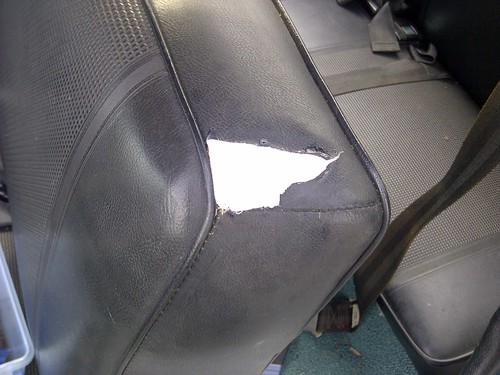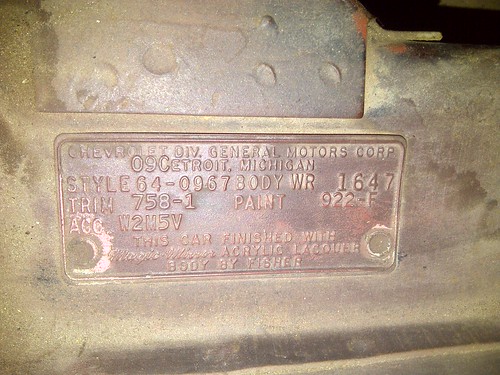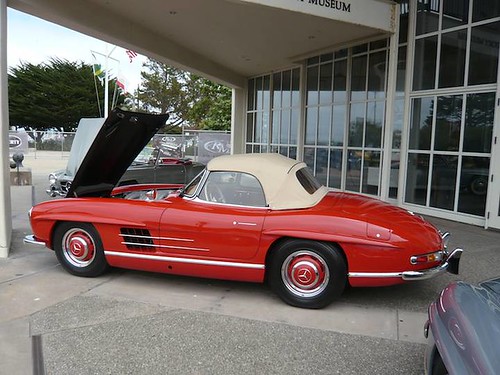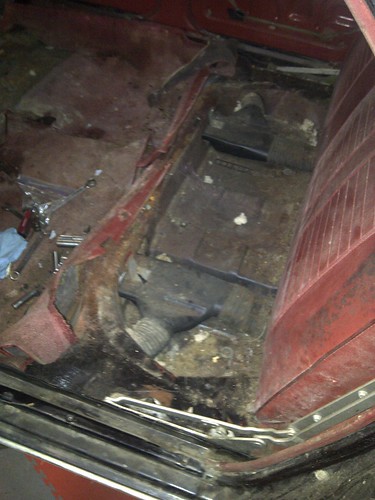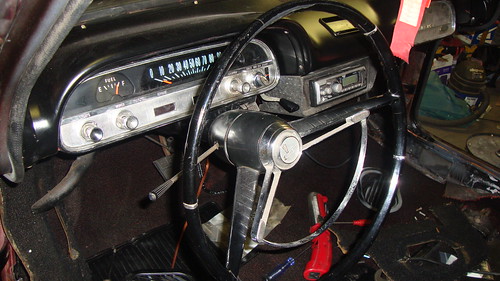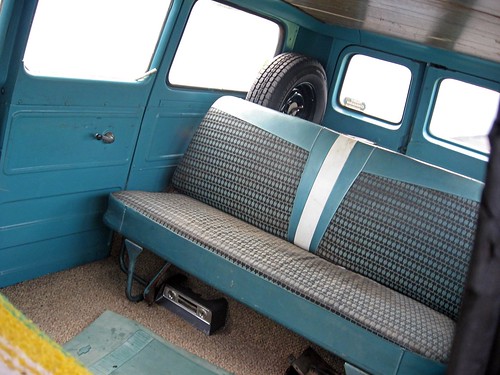As outlined in my last post, I had high hopes and big plans for the long holiday weekend. How did I do? Pretty well, but a cheap paint gun held me back from checking off all the tasks I’d listed.
Thursday I rolled Ringo out of the garage and primed the last two sheetmetal parts by first hanging them on a wire strung across the garage. Then, I emptied five cans of vinyl dye onto the carpet pieces.
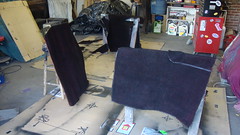
Next, out came the door and onto the sawhorses – deja vu is not a good feeling. Using my last sheet of hook-and-loop 80 grit sandpaper, I removed the fish-eyed paint from about half the door’s exterior surface before switching to 120 grit and hand-sanding. Soon after lunch, it was ready for primer so I hung it from the rafters, donned my painting apparel and mask, mixed a batch of urethane primer and gave the skin three good coats. After an hour of curing, I moved the door to the driveway and hung up all the interior bits of sheetmetal for the shooting of the satin black. A couple coats and they looked like new.
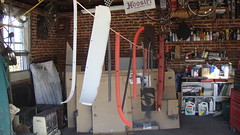
The lovely Loriann convinced me that brushing the paint on the interior would look like crap, so I spent the time in between coats masking. With that finished, it was time to roll Ringo back into the garage and shoot the interior surfaces with the same rattle-can Rustoleum. All that went better than I’d expected and I was able to get three coats down on every exposed area of primed metal before dark. That was it for the day.
Friday I pulled off all masking and started some reassembly while I waited for the air temp to heat up. In went the nearly-black carpet pieces and the rear package area covers followed by the speakers to hold the latter pieces in place.
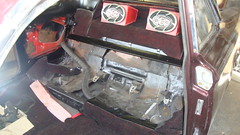
With the carpets in I was able to see a screw-up – I’d matched Lucy’s seatbelt mounting hole locations when drilling into Ringo’s floors, but sadly, the holes in the carpet did not match up with the new mouting holes. I’ll just make new holes in the carpet since I don’t want to deal with filling in holes in the sheetmetal flooring. Since the loose interior trim was fully dried, I proceeded to install all of them into their homes.

Next, it was time to deal with the door. Back on the sawhorses so I could smooth out the primer and rinse off the residue. Then back up into its hangin position before wiping it down completely with Wax and Grease Remover. Finally, I was able to mix a batch of Black Cherry Pearl to lay down some layers of paint. Having made as many precautions against fish-eyes as possible, I felt confident that I’d end up with a nearly perfect job, but I was sadly mistaken. The day before I had cleaned the primer out of my Harbor Freight gun, disassembled it, and blew out the passages as best I could with dry, compressed air. So, after test shots on cardboard and my anniversary engine lid
anniversary engine lid that both looked fine, I laid down a light coat onto the door. I was shocked and mightily pissed to see an array of tiny gray dots forming on the door. Since there were already some fish-eyes in the rest of the paint job, I continued on resigned that the door would also sport the spots, but at least it was the passenger door. After four coats of paint, it actually wasn’t too noticeable. With the paint on, I cleaned the gun rigorously again disassembling and blowing out the passages before mixing and loading clear into the cup. While spraying the first coat of clear, the fish-eyes grew before my eyes and immediately I just stopped what I was doing, threw away the rest of the clear and decided I needed a new plan. It was apparent to me that I had been unable to get all the thinner out of the gun and some was mixing into the coatings as they were being sprayed.
Time for plan B. I’ve got three guns, so I’ll be using all of them the next (and darn well better be the last) time I do the door. My oldest, largest tipped gun will shoot the primer, I’ll be returning the Harbor Freight gun for a new replacement and that one will lay down the color coats, while my touch-up gun with its 1.8mm tip will do clearcoating duties. This way no thinner will ever get in any of the guns before they are used.
Not being in ANY mood to continue working on cars, I knocked off for the day.
Saturday I swapped steering wheels and pinchweld trim with Lucy and installed taillight assembly.
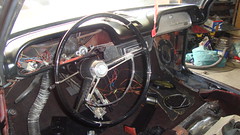
The latter activity was time consuming since I had to find the four sockets and lenses and all the hardware and then rewire them to the car since they were not cautiously removed a year ago. One of the repairs I had to undertake was the replacement of one of the contacts. Somehting I hadn’t done before, but it all went well.
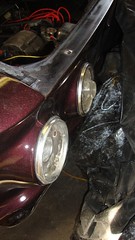
I still need to replace a couple lens gaskets with new ones and connect the ground wires when I install the shroud seal strips, but I’m calling that significant first step in the exterior reassembly complete. The last thing I did on the weekend was screw on the chrome trim pieces around the windows. This car is going to look awesome when I FINALLY get it all back together.





















